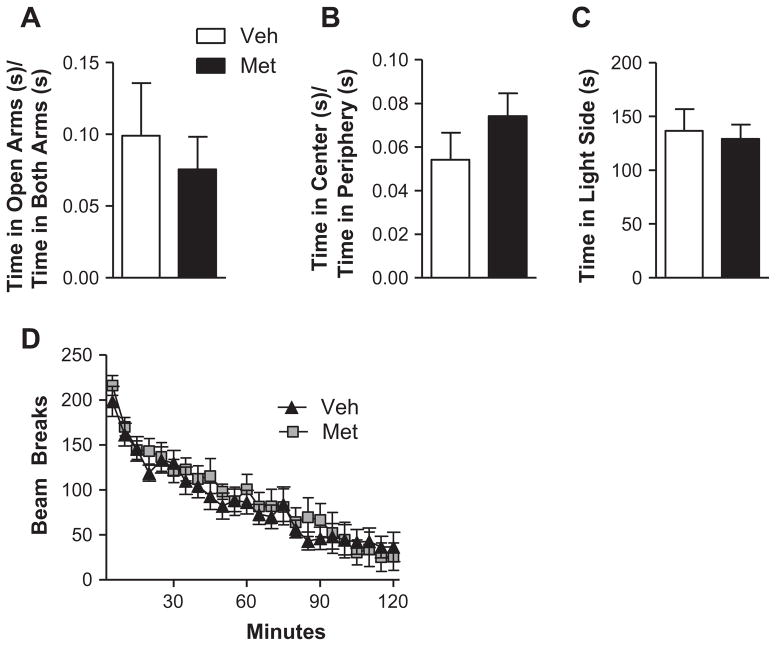Fig. 3.
Administration of metyrapone does not affect anxiety-like behavior or locomotor activity. Acute administration of 50 mg/kg metyrapone did not result in altered anxiety-like behavior, as measured in three different behavioral tasks. (A) In the elevated plus maze, the ratio of time spent in the open arms to time spent in both arms was similar for mice that received vehicle and metyrapone [student’s t-test, t(22) = 0.54, p = 0.60]. Legend applies to panels A–C. (B) In the open field task, there was no difference between groups in the ratio of time spent in the center of the field to time spent in the periphery of the field [student’s t-test, t(22) = −1.22, p = 0.23]. (C) In the dark/light box, mice that received vehicle and metyrapone both spent comparable amounts of time in the light side of the chamber [student’s t-test, t(22) = 0.31, p = 0.76]. (D) In a novel home cage, metyrapone administration did not affect locomotor activity and all mice showed a decrease in locomotor activity across the 2 h session [2-way repeated measures ANOVA; main effect of treatment: F(1, 22) = 0.12, p = 0.74; main effect of time: F(23,506) = 62.19, p < 0.000001; treatment × time interaction: F(23,506) = 1.03, p = 0.43]. N = 12 for all groups.

